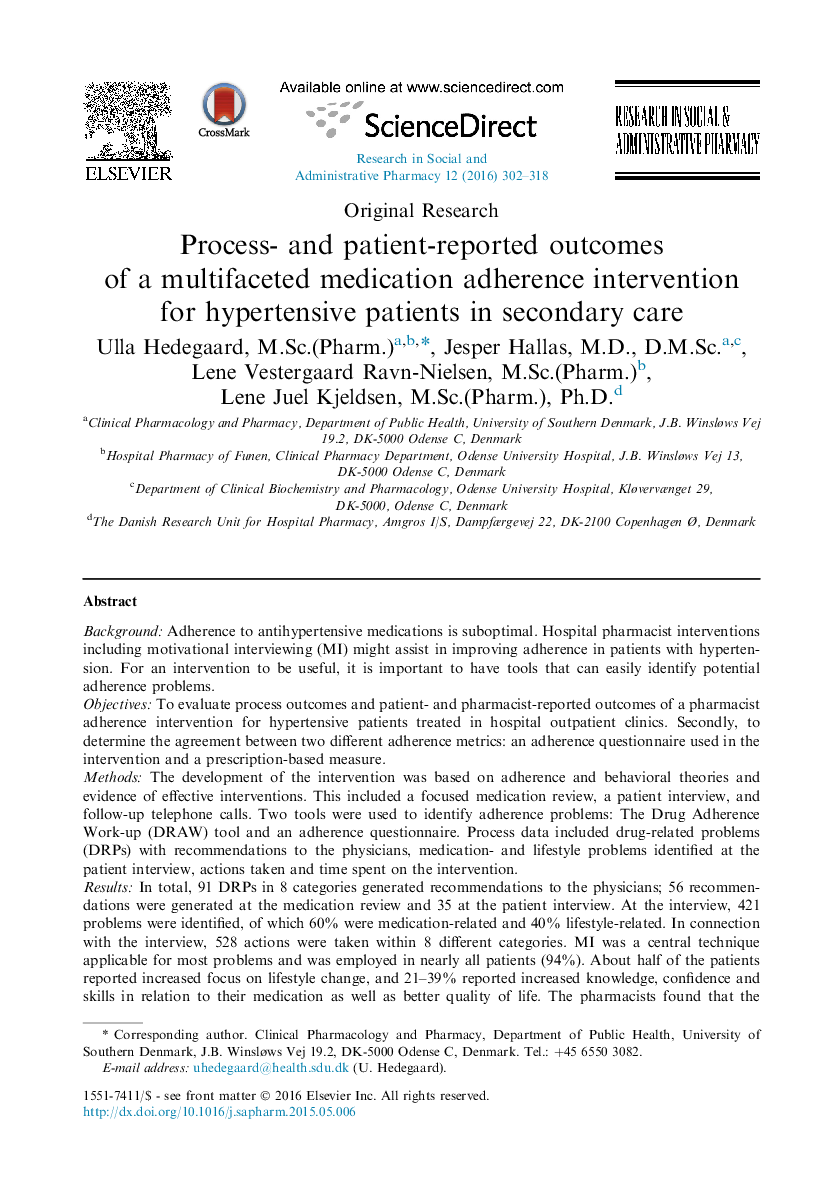| کد مقاله | کد نشریه | سال انتشار | مقاله انگلیسی | نسخه تمام متن |
|---|---|---|---|---|
| 5821462 | 1117596 | 2016 | 17 صفحه PDF | دانلود رایگان |
BackgroundAdherence to antihypertensive medications is suboptimal. Hospital pharmacist interventions including motivational interviewing (MI) might assist in improving adherence in patients with hypertension. For an intervention to be useful, it is important to have tools that can easily identify potential adherence problems.ObjectivesTo evaluate process outcomes and patient- and pharmacist-reported outcomes of a pharmacist adherence intervention for hypertensive patients treated in hospital outpatient clinics. Secondly, to determine the agreement between two different adherence metrics: an adherence questionnaire used in the intervention and a prescription-based measure.MethodsThe development of the intervention was based on adherence and behavioral theories and evidence of effective interventions. This included a focused medication review, a patient interview, and follow-up telephone calls. Two tools were used to identify adherence problems: The Drug Adherence Work-up (DRAW) tool and an adherence questionnaire. Process data included drug-related problems (DRPs) with recommendations to the physicians, medication- and lifestyle problems identified at the patient interview, actions taken and time spent on the intervention.ResultsIn total, 91 DRPs in 8 categories generated recommendations to the physicians; 56 recommendations were generated at the medication review and 35 at the patient interview. At the interview, 421 problems were identified, of which 60% were medication-related and 40% lifestyle-related. In connection with the interview, 528 actions were taken within 8 different categories. MI was a central technique applicable for most problems and was employed in nearly all patients (94%). About half of the patients reported increased focus on lifestyle change, and 21-39% reported increased knowledge, confidence and skills in relation to their medication as well as better quality of life. The pharmacists found that the intervention elements were meaningful pharmacist tasks, and that the DRAW tool was easy to use and helped them focus on addressing reasons for non-adherence. The mean total time spent by the pharmacist per patient was 2 h 14 min (SD 40 min).ConclusionsA pharmacist-led, multifaceted, tailored adherence intervention was feasible for identifying and addressing a wide range of potential adherence and lifestyle problems. Among the intervention procedures, MI was a central technique, applicable in most types of problems. The questionnaire showed relatively little value for identifying non-adherence. The intervention was well accepted both by the pharmacists and the patients, thereby increasing the likeliness of successful implementation in routine practice.
Journal: Research in Social and Administrative Pharmacy - Volume 12, Issue 2, MarchâApril 2016, Pages 302-318
